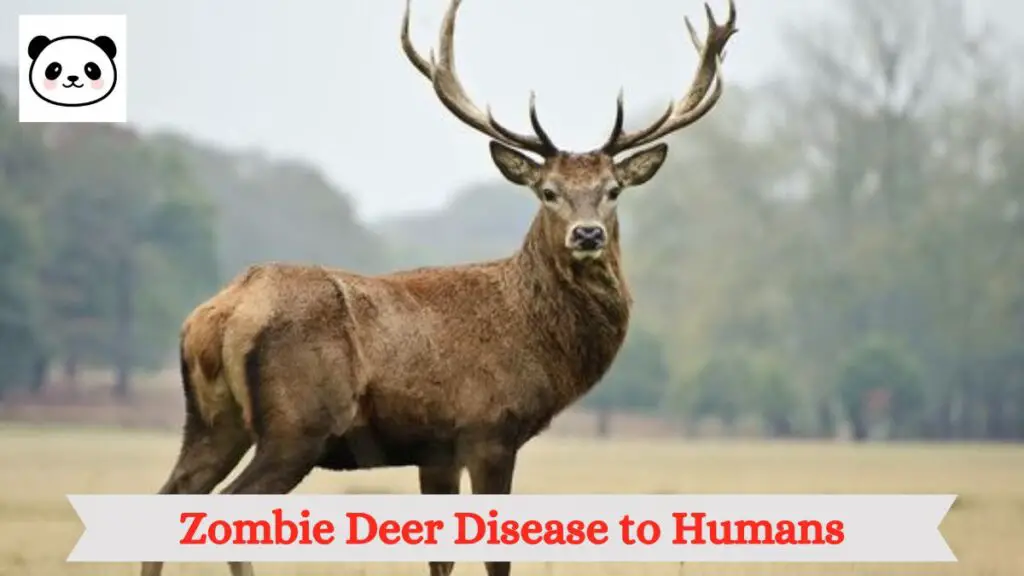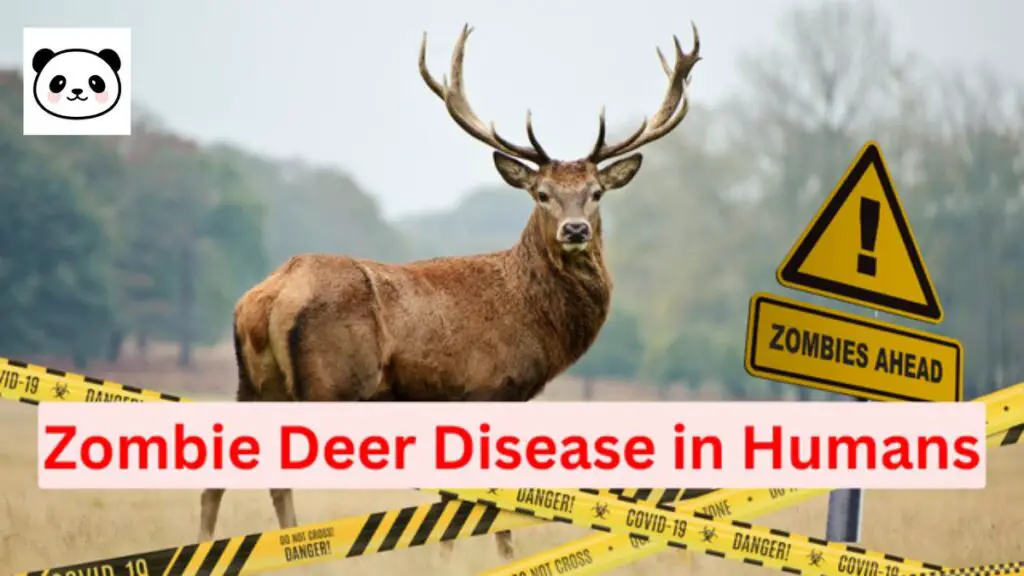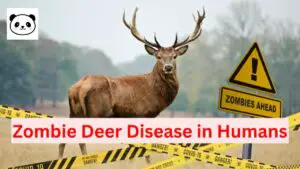Introduction – Zombie Deer Disease to Humans
In recent years, a puzzling ailment has loomed over the deer population earning the disconcerting label Zombie Deer Disease to Humans. As scientists delve into the intricacies of this mysterious condition questions about its implications for humans take center stage. This article delves into the complexities of zombie deer disease exploring its potential threat to humans in straightforward terms and shedding light on the scientific aspects to ensure clarity for all readers.
Understanding Zombie Deer Disease


Scientifically termed Chronic Wasting Disease (CWD) Zombie Deer Disease to Humans predominantly affects deer elk and moose. Classified under neurodegenerative diseases known as transmissible spongiform encephalopathies (TSEs) it distinguishes itself from infectious diseases caused by bacteria or viruses by involving the misfolding of proteins leading to neurological issues.
How Does It Spread?
CWD spreads through prions misfolded proteins capable of initiating a chain reaction in healthy proteins resulting in widespread damage in the brain and nervous system. The disease exhibits high contagion among deer and other cervids transmitting through direct contact contaminated environments and even indirectly via infected feed and water sources.
Human Implications
While CWD primarily affects animals concerns have emerged about the potential transmission of Zombie Deer Disease to Humans. The scientific community actively explores this possibility with no conclusive evidence as of now proving transmission to humans. However caution and ongoing research are crucial to fully comprehend the associated risks.
The Link Between Animals and Humans
To fathom the potential threat to humans scientists scrutinize the similarities and differences between cervid prions and human prions. Diseases like Bovine Spongiform Encephalopathy (BSE) in cattle and Scrapie in sheep recognized as prion diseases in animals have transcended species barriers and affected humans. The worry is that CWD could follow a comparable trajectory.
The Role of Consumption
A primary concern centers around the consumption of infected meat. Hunters and those relying on deer as a food source may question the safety of consuming venison. Proper handling and cooking of meat are vital precautions as cooking temperatures exceeding 165°F (74°C) can eradicate prions. However the lingering presence of prions in the environment poses additional challenges.
Surveillance and Prevention
Zombie deer disease’ concerns scientists over possible spread to humans pic.twitter.com/OBgshpVPKy
— Daily Loud (@DailyLoud) December 25, 2023
Given the uncertainties surrounding Zombie Deer Disease to Humans surveillance and preventive measures become imperative. Regions with reported CWD cases enforce strict monitoring of deer populations testing programs and regulations to minimize the risk of transmission.
Environmental Contamination
CWD prions can endure in the environment for an extended period presenting challenges for containment. This persistence raises concerns about potential contamination of soil water and vegetation further complicating efforts to control the disease’s spread.
The Need for Further Research
Scientist fears 'ZOMBIE' deer disease could spread to HUMANS after first ever case of the fatal brain virus that makes animals drool and unafraid of humans was detected in Yellowstone National Park https://t.co/Sd8t2AXnX4 pic.twitter.com/Uv2DLz6qYt
— Daily Mail Online (@MailOnline) December 24, 2023
As the scientific community grapples with the complexities of Zombie Deer Disease to Humans the urgency for additional research becomes evident. Ongoing studies aim to unravel the mysteries surrounding CWD addressing knowledge gaps and providing a more comprehensive understanding of its potential impact on both animal and human health.
Conclusion
In the enigmatic realm of Zombie Deer Disease to Humans the scientific community persists in its quest for answers. While current evidence falls short of definitively establishing a link between CWD and human infection a cautious approach to handling and consuming deer products remains prudent. As research advances a clearer picture may emerge guiding us in the endeavor to safeguard both animal and human well-being from the shadows of this mysterious ailment.
What is Zombie Deer Disease to Humans?
Zombie Deer Disease to Humans is a colloquial term for Chronic Wasting Disease (CWD), a neurodegenerative condition primarily affecting deer, elk, and moose.
How does CWD spread?
CWD spreads through prions, misfolded proteins capable of initiating a chain reaction in healthy proteins. It can transmit among deer and other cervids through direct contact, contaminated environments, and even indirectly through infected feed and water sources.
Is there evidence of CWD transmission to humans?
As of now, there is no conclusive evidence proving the transmission of Zombie Deer Disease to Humans. However, ongoing research and caution are essential to fully understand associated risks.
What is the link between animal and human prion diseases?
Scientists study the similarities and differences between cervid prions and human prions. Diseases like Bovine Spongiform Encephalopathy (BSE) in cattle and Scrapie in sheep, known as prion diseases in animals, have crossed species barriers and affected humans.
Is it safe to consume venison from deer affected by CWD?
While a primary concern revolves around the consumption of infected meat, proper handling and cooking, with temperatures exceeding 165°F (74°C), can eliminate prions. However, challenges arise due to the persistence of prions in the environment.
How can the spread of CWD be controlled?
Strict monitoring of deer populations, testing programs, and regulations are implemented in regions with reported CWD cases to minimize the risk of transmission. Controlling environmental contamination poses additional challenges.
Why is further research necessary?
Ongoing research aims to unravel the complexities of Zombie Deer Disease to Humans, addressing knowledge gaps and providing a more comprehensive understanding of its potential impact on both animal and human health.









